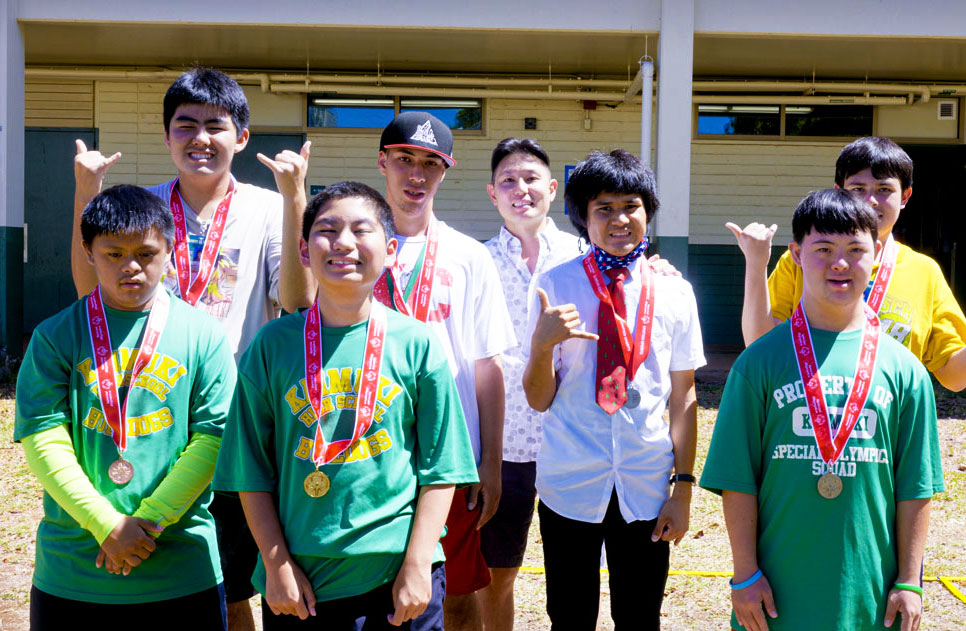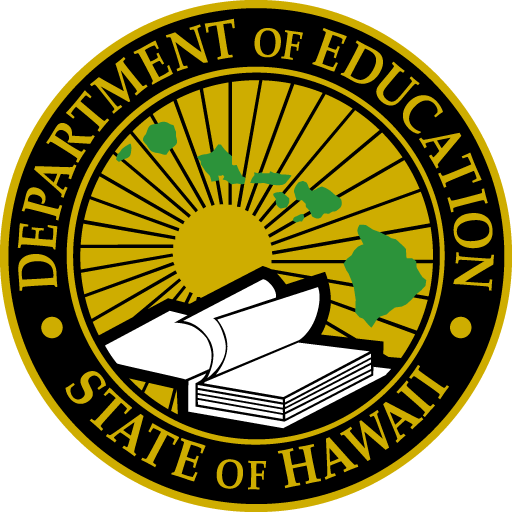The Hawaiʻi State Department of Edukasyon (HIDOE) provides services to children ages 3 through 21, residing in Hawaiʻi, who are eligible for espesyal nga edukasyon ug may kalabutan nga mga serbisyo. Special education is specially designed instruction, related services, and other supplementary aids to meet your child’s unique needs—at no cost to parent(s).
overview
Special education refers to a range of services provided your child with disabilities to improve their educational outcomes. It is specially designed instruction to meet the unique needs of your child with disabilities. Special education may include, but is not limited to, academic services, speech-language services, psychological services, physical and occupational therapy, counseling services, and parent education. In addition, espesyal nga edukasyon services are provided at no cost to parent(s). Find out if Espesyal nga Edukasyon Is it for your child? (PDF).
Special education services are made available to any student — ages 3 through 21 — who demonstrates a need for specially designed instruction after an eligibility determination. An evaluation will determine the nature and extent of the student’s needs. Evaluations are separate assessments that may include: academic performance, communication skills, general intelligence, health, vision, hearing, social and emotional status, and motor abilities. If your child is eligible for espesyal nga edukasyon, services are provided through an Individualized Edukasyon Program (IEP).
The federal Individuals with Disabilities Edukasyon Improvement Act of 2004 (IDEA) and state regulations require the HIDOE to provide a free appropriate public education (FAPE), which includes a continuum of services for your child who is eligible for espesyal nga edukasyon ug may kalabutan nga mga serbisyo.
Ebalwasyon ug Kwalipikado
Special education is intended for students who have disabilities that cause difficulty in learning and need specialized instruction.
Evaluation is defined as the procedures used to determine if your child has a disability and the nature and extent of the need for espesyal nga edukasyon and related services. This process helps identify learners who are eligible for espesyal nga edukasyon and related services by determining the presence of a disability and the need for espesyal nga edukasyon services. There are specific timelines that teams must follow for the evaluation process.
Appropriate referrals for espesyal nga edukasyon begins after supportive instructional practices have occurred and the student needs far more than the classroom teacher can provide through general education support. For example, a student who has significant academic and/or behavioral challenges and continues to display a lack of progress despite increasing levels of intervention.
Determination of Disability for Espesyal nga Edukasyon
Ang mga team kinahanglan:
- Paghimo ug ebalwasyon
- Kompletoha ang three-prong test
- Consider your child’s educational progress and the interaction between the disability
- Determine the educational impact of that disability
- Decide the need for espesyal nga edukasyon
This important distinction highlights that the disability label alone does not prompt a determination of eligibility for espesyal nga edukasyon. In the context of espesyal nga edukasyon eligibility, the disability label has no standing without reference to impaired educational progress as a result of the disability.
Three-Prong Test
Each prong must be met before the team can determine that if your child is eligible for espesyal nga edukasyon.
- Prong 1: Pagkabaldado – May diperensya ba ang imong anak?
- Prong 2: Dili maayo nga epekto – Is the disability adversely affecting your child’s involvement and progress in general education?
- Prong 3: Kinahanglan – Does your child need espesyal nga edukasyon and related services due to their disability?
Individualized Edukasyon Programa
An Individualized Edukasyon Program (IEP) is a written statement about the educational program for your child with a disability. It serves as a management tool to ensure that your child receives the needed espesyal nga edukasyon and related services. It can also serve as an evaluation tool when used to determine the extent of their progress toward accomplishing projected goals.
Ang matag IEP naglakip sa:
- A statement of your child’s present levels of academic achievement and functional performance
- Usa ka pahayag sa tinuig nga mga tumong, lakip ang mubo nga mga tumong sa pagtudlo
- A statement of the specific espesyal nga edukasyon and related services to be provided
- The extent that your child will be able to participate in regular educational programs
- Ang giplano nga mga petsa alang sa pagsugod sa mga serbisyo ug ang gipaabot nga gidugayon sa mga serbisyo
- Tukma nga sukaranan nga katuyoan ug mga pamaagi sa pagtimbang-timbang ug mga iskedyul alang sa pagtino, labing menos usa ka tinuig nga basehan, kung ang mga katuyoan nakab-ot
Beginning at age 14 (or younger if determined appropriate by the IEP team), the IEP shall include a statement of the transition service needs of your child—under the applicable components of the their IEP—that focuses on their courses of study (such as participation in a vocational educational program).
Sugod dili molapas sa unang IEP nga mapatuman sa dihang ang imong anak mag-16 anyos na (o mas bata pa kon matino nga angay sa IEP team), ang IEP kinahanglang maglakip sa:
- Tukma nga masukod nga post-secondary nga mga tumong base sa tukma sa edad nga transition assessment
- Ang mga serbisyo sa transisyon (lakip ang mga kurso sa pagtuon) gikinahanglan aron matabangan ang estudyante sa pagkab-ot sa mga katuyoan
- Ang mga pagtasa sa pagbalhin nga angay sa edad base sa indibidwal nga mga panginahanglanon sa imong anak nga gamiton aron mahibal-an ang angay nga masukod nga mga katuyoan pagkahuman sa sekondarya
- Sugod sa dili molapas sa usa ka tuig sa dili pa moabot ang imong anak sa edad nga mayoriya ubos sa balaod sa estado, (18 ka tuig ang edad sa Hawaiʻi), ang ilang IEP kinahanglang maglakip sa usa ka pahayag nga ang estudyante gipahibalo sa iyang mga katungod ubos sa Part B sa IDEA, kon aduna man, nga ibalhin sa imong anak sa pagkab-ot sa edad sa kadaghanan.
Ang mosunod ang mga partisipante kinahanglan nga naa sa usa ka miting sa IEP (PDF):
- A representative of the public agency, other than your child’s teacher, who is qualified to provide, or supervise the provision of, espesyal nga edukasyon
- The child’s teacher
- Usa o duha sa mga ginikanan/legal nga tigbantay
- Ang imong anak, kon angay
- Ang ubang mga indibidwal sa pagbuot sa ginikanan o ahensya
Mga Miting sa IEP
Ang mga miting sa IEP kinahanglang himoon labing menos kada tuig. Depende sa mga panginahanglan ug pag-uswag sa imong anak, ang mga miting nga ribyuhon ug rebisahon mahimong himoon nga mas kanunay.
Samtang ang mga miting sa IEP sa kasagaran gisugdan ug gipahigayon sa eskwelahan, angay alang sa mga ginikanan nga mohangyo ug IEP nga miting kung ikaw nagtuo nga ang imong anak dili maayo nga pag-uswag o imong gibati nga adunay problema sa kasamtangan nga IEP.

ANG akong anak ba adunay deperensya?
Pagpangita sa Bata is HIDOE’s process of identifying, locating and evaluating children and youth who have been identified as or are suspected of having a disability and may need espesyal nga edukasyon and related services. If you suspect your child may have a disability, we are here to help. Pagkat-on pa
